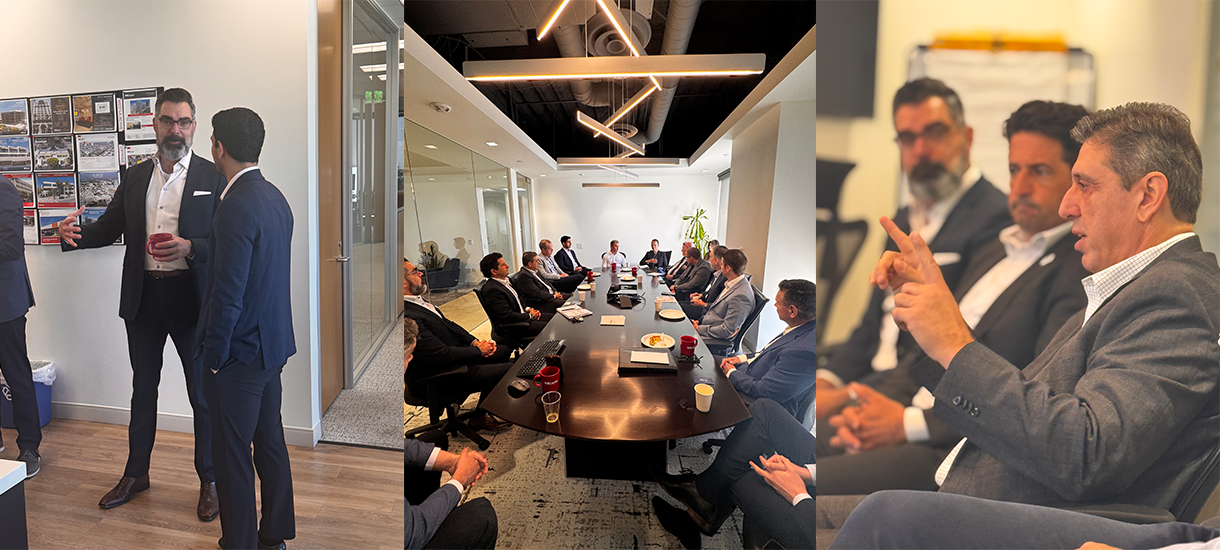Our first breakfast of the quarter was incredibly energizing. With a room full of top-notch lenders, developers, and architects, we explored the current economic climate, which is proving to be more persistent and complex than we initially anticipated. Here’s a summary of the insights we shared at NAI Capital, particularly relevant to our industry in California.
We kicked off Thursday morning at NAI Capital with a powerhouse roundtable of panelists and like-minded professionals. Peter Steigleder led the conversation between Bradley Ross (Parkview Financial), Fred Ornelas (Axos Bank), Ben Townsend (Petros PACE Finance), and Dimitar Goulev (Acore Capital) with a focus on the critical factors shaping LA's development landscape: the impact of politics, tariffs, and Fed rates. Everyone is getting creative to make deals work and keep moving in times of foreseeable uncertainty.

Here is our summary with 10 takeaways and a bonus track on what's next:
- Cost of capital remains a critical driver. There is a generalized expectation for projects to move forward with the cost of capital dropping below 6%.
- Treasury rates are not expected to go down soon.
- California’s pace is slow. Eyes are turning to more active markets like Texas and Arizona.
- Longer timelines = rethinking structures. Investors and lenders are looking at Exits in 3 to 5 years, and projects are taking longer. This impacts how to structure loans for short vs long term and how to use bridge loans for cash flow and CPACE loans for renovations and upgrades to properties.
- Wildfire-affected areas are under pressure. With only an average of 65% insurance coverage, many long-time owners are struggling to rebuild. The challenge isn’t just financial — it’s generational. Owners must have 35% in cash to rebuild, many being second or third-generation owners who may not have the liquidity to bear the load.
- Time to reimagine, not just rebuild. The consensus? The future lies in building smarter: higher density, vertical growth, and underground parking.
- The key role of cities and communities. The general expectation is that it will take 18 to 24 months to see the start of the rebuilding process, only if cities and communities open to a constructive dialogue and speed up the permitting process (more so when multiple agencies overlap).
- Smart investing starts with the right questions, in that exact order:
#1: How do we not lose money?
#2: How do we make money?
For a lender to structure a loan, construction costs must be clear and maintained.
- The seasoned team behind the project. Lenders must make a risk assessment by qualifying architects, general contractors, and main subs to ensure they mitigate the risk of cost overruns or delays in construction.
- BIM isn’t optional anymore. It’s a coordination tool and a safety net to keep the project on track.

Bonus track
The next big disruption is already knocking. Tokenization via blockchain is reshaping how debt and equity are handled, increasing transparency, liquidity, and reach. It’s no longer “if,” but “how fast.” Those who look the other way will soon find themselves behind the race.
Thank you to the great panelist who shared their perspectives and those who joined us. We’re proud to keep hosting and joining these conversations that bring clarity, foresight, and opportunity to the table. If you have any questions about any of the topics listed, please feel free to reach out, and we will contact you to get the conversation going.
See the full gallery here.